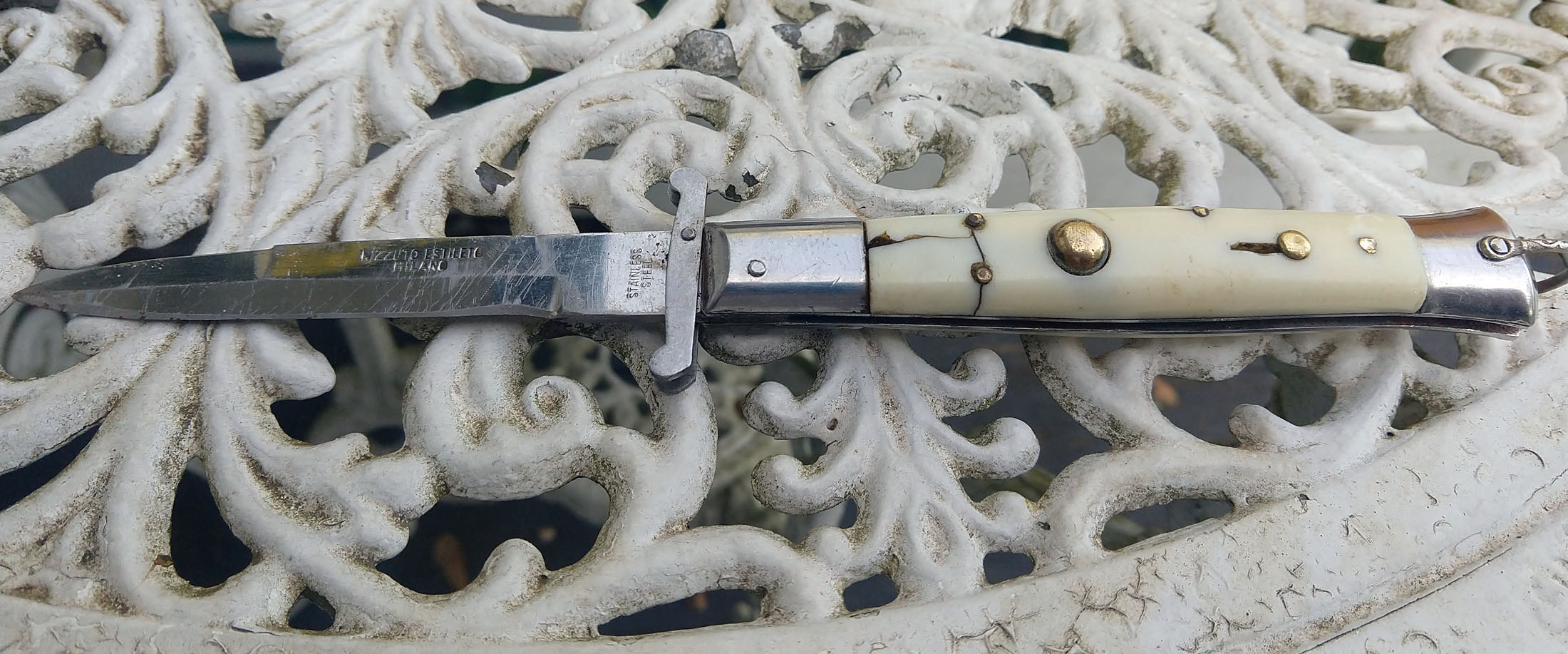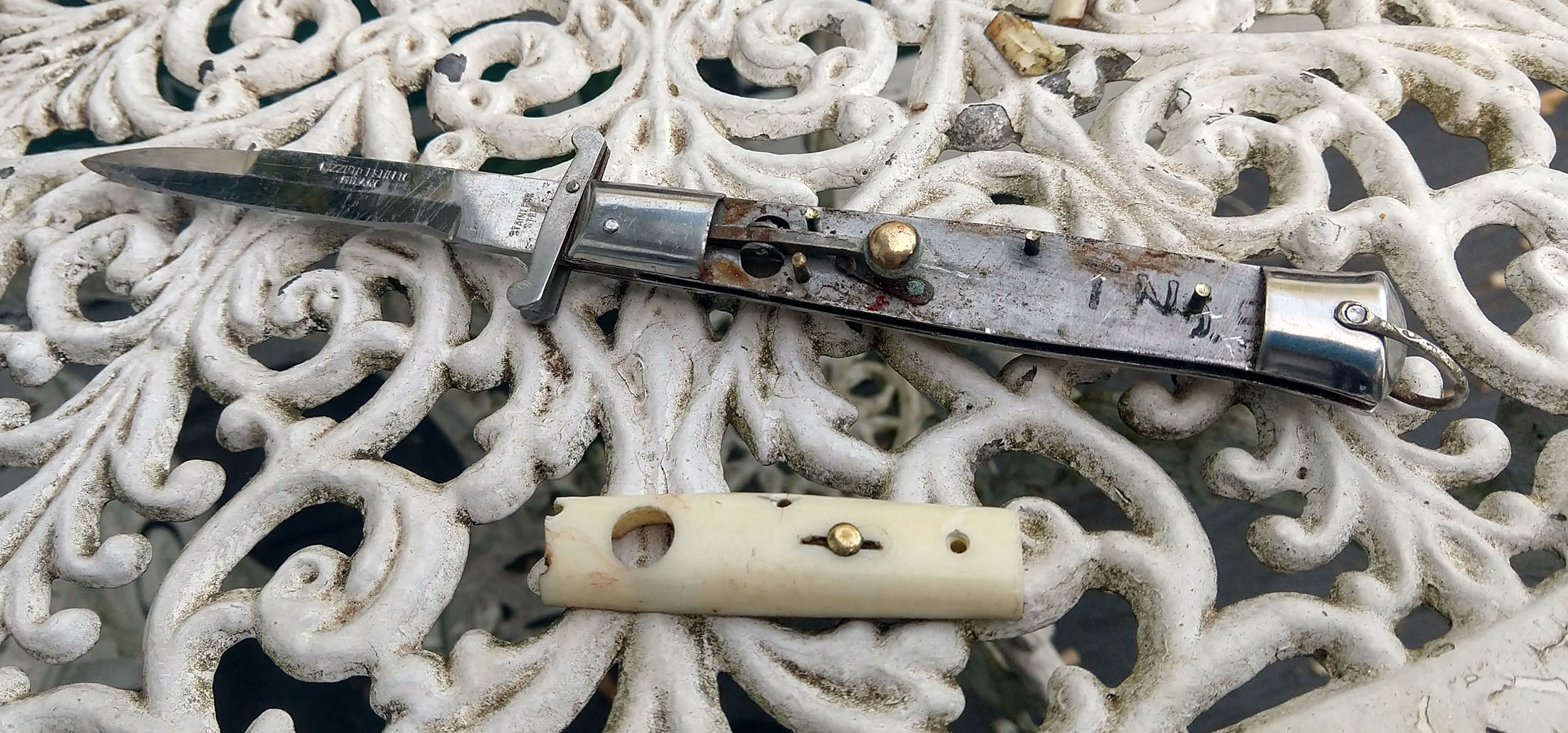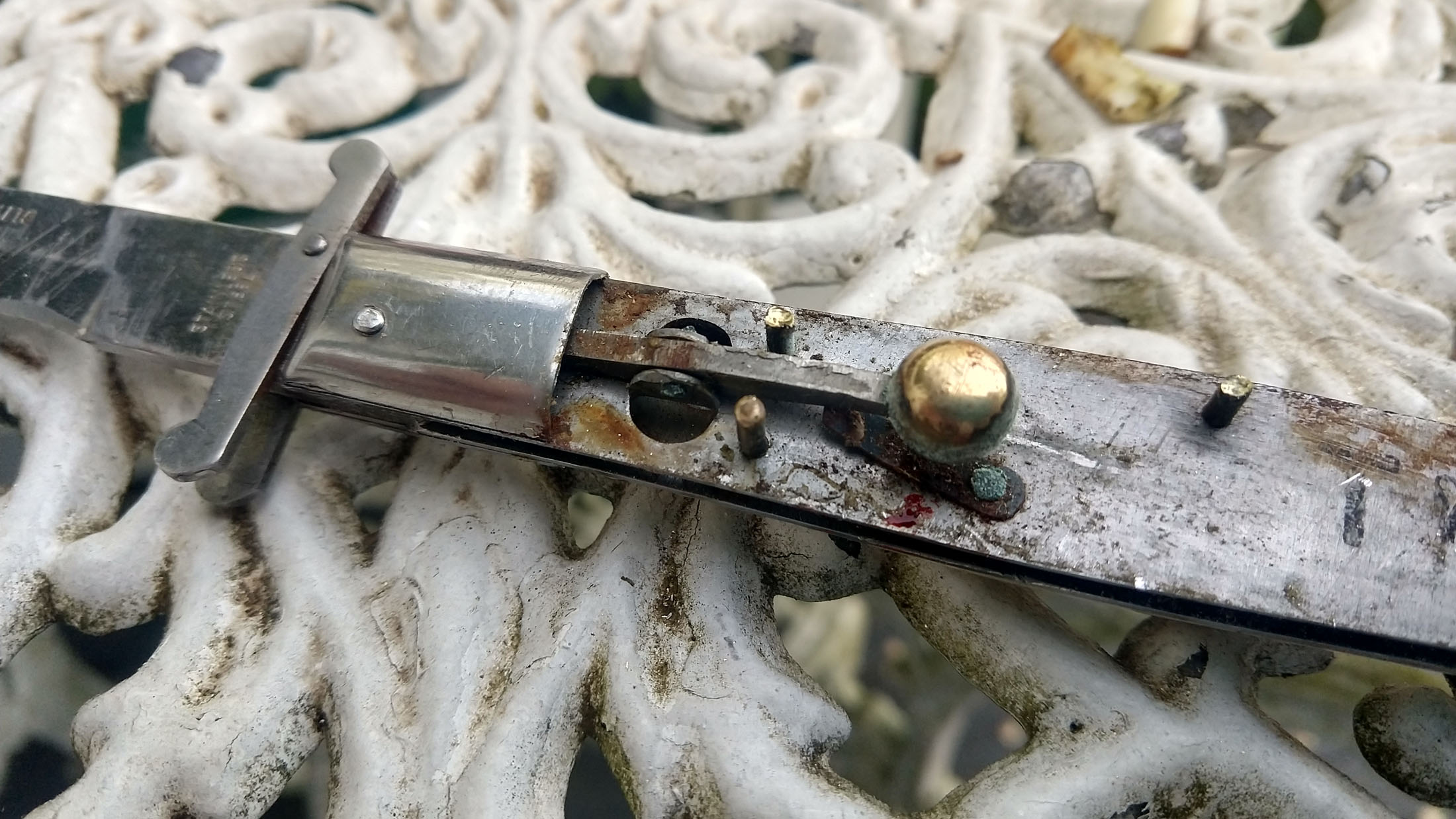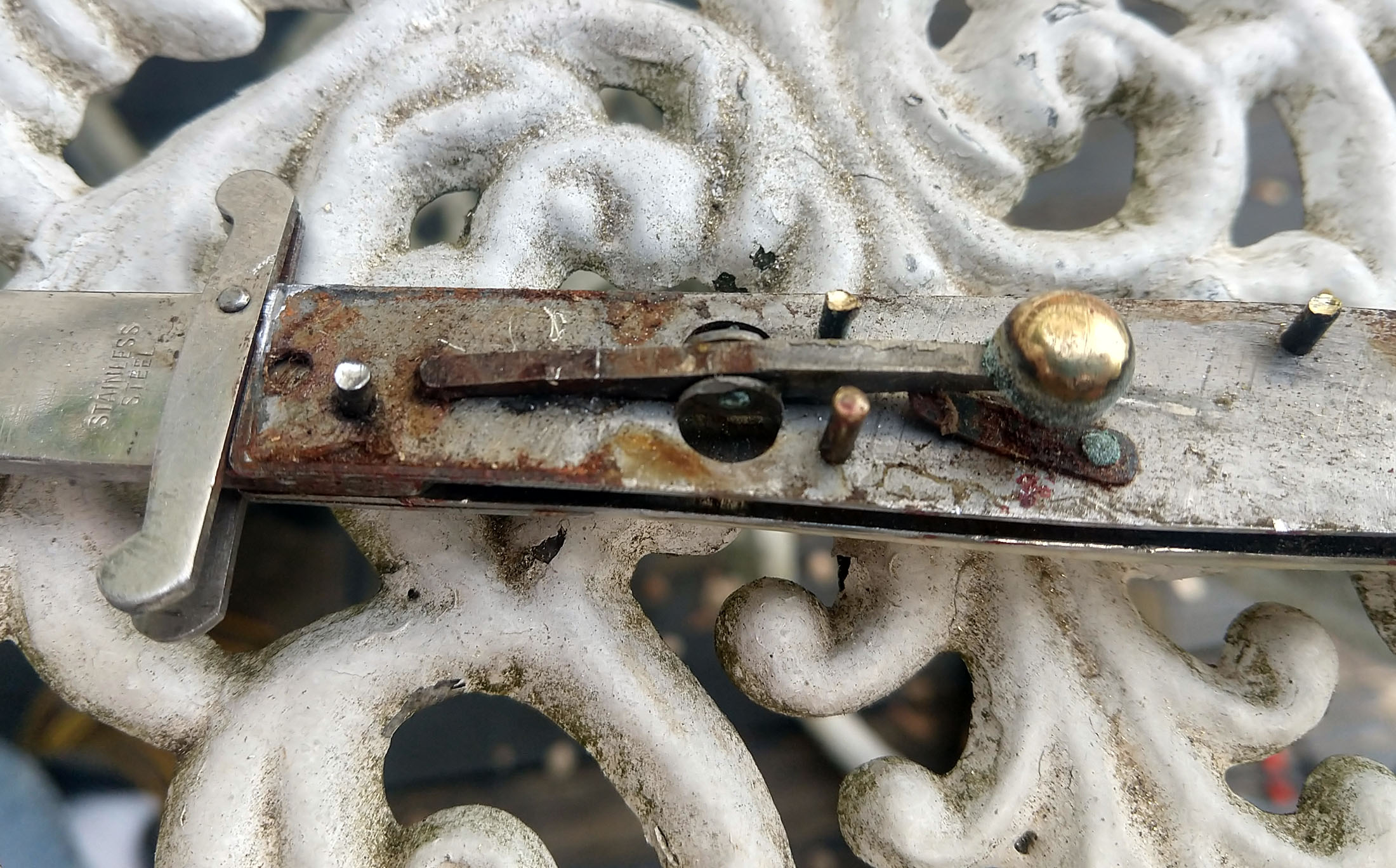It is no secret that rizzuto knives were not made with the same durability as something like an Italian picklock or a vintage MCM Maniago knife. The metals used were often soft and the lighter acrylic scales tended to fracture. Some rizzutos were made with a zinc rocker which had a pretty high failure rate. If you have a rizzy that won’t open because the button is sitting deep into the handle, you likely have a knife made with a pot metal rocker that fractured by the pivot pin. If you have a rizzy that peeks, it is likely that the sear hole has worn due to soft steel used to make the blade. If your rizzy wobbles, likely it too is due to soft metal being used for the blade.
All rizzutos were D-stamped. The vast majority had a bale and either a batwing, mustache or standard finger guard. Liners were always steel and most back springs were chrome plated. A round firing button indicates a steel rocker while a flat firing button indicates a zinc rocker. What is always found with Japanese rizzuto knives is that the rocker is of a length for the sear pin to engage the sear catch below the top bolster.
There were some rizzutos that had stronger steel. You know them when you see them. There are even some with pot metal rockers that are still kicking after all of these years. It stands to reason the weakest ones failed a long time ago and fell out of the pool of however many rizzys were ever made. It also very true that excellent examples can and do turn up.
Below are images of the inside of an early rizzuto estileto milano knife. This one has the steel rocker and rectangular bolsters. The back spring was completely rusted through and broken on this one suggesting that prolonged exposure to moisture did it in.




